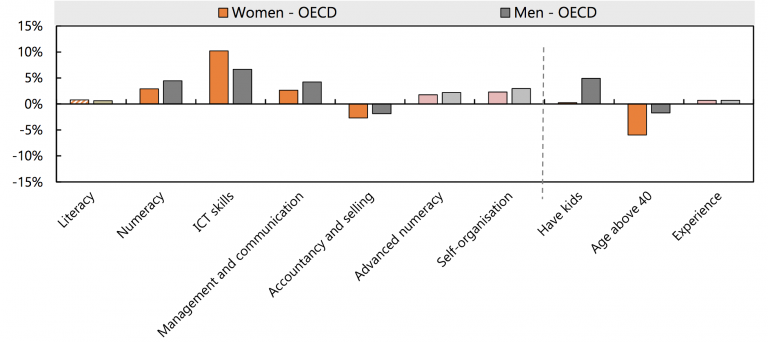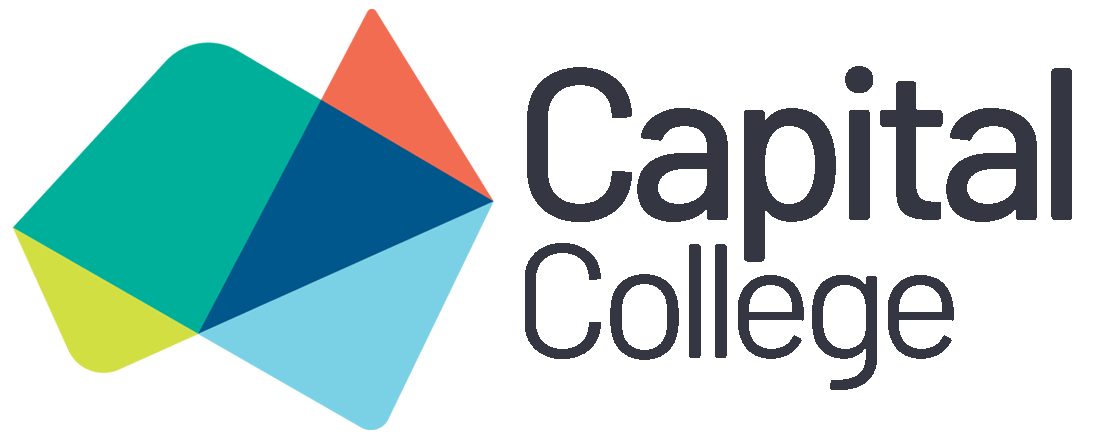“Education and training should help all genders acquire the skills that matter most in the workplaces of the future.” Nic Read, CEO, Capital College
A majority of international students studying IT courses are male. But times are changing, and there are many reasons for female students to set their sights on IT as a study and career choice.
Annie Lennox of The Eurythmics once belted out these lyrics: “Now there was a time, When they used to say, That behind every great man, There had to be a great woman. But in these times of change, You know that it’s no longer true, So we’re comin’ out of the kitchen, ‘Cause there’s somethin’ we forgot to say to you: We say, Sisters are doin’ it for themselves; Standin’ on their own two feet; And ringin’ on their own bells; We say, Sisters are doin’ it for themselves.”
In this time of new horizons and new norms, Annie’s song applies to education for international students in the field of Information Technology. This has long been regarded the domain of male students. But all of that is changing.
The current state
The number of IT professionals in Australia is rising from 640,846 in 2016 to a projected 721,886 by 2022, reflecting the increasingly key importance of IT as not just a technical role but also one that includes business consultation and organisational transformation.
According to Deloitte, around 32% of this growth will be in IT management roles and 27% will be in IT technical roles (Source: Deloitte Access Economics, Australia’s Digital Pulse).
As one of the world’s most equality-minded developed nations, Australia has an opportunity to build a skilled and diverse IT workforce that attracts and promotes an even number of male and female players.
New initiatives
Among the initiatives that Australian schools and companies can work on to promote equal numbers of male and female international students starting and completing IT vocational training (and going on to experience a climate of equal opportunity in the IT workforce), are these ideas:
Cast a wider recruiting net.
Instead of relying on narrow channels to find qualified candidates, apply a more diverse search. Companies can recruit from Registered Training Organisations as well as universities. They can partner with colleges to run job fairs, internships and conferences that feature female students studying or talking about how IT can improve a business. They can eliminate bias in their recruitment materials and job ads by showing diverse role models and avoiding gender stereotypes for the IT industry.
Specify diversity in selection criteria.
When the selection criteria for enrolments and jobs doesn’t promote diversity, it can reinforce traditional bias. When someone says, “IT studies are better suited to male students than female students’, it’s a stereotype that’s just as inaccurate as saying, “More Indians and Nepalese want to study technology, and more Chinese and Brazilians want to study business.” Race and gender bias are outdated concepts in the 21st century. Colleges, companies and even immigration assessors can establish transparent, measurable criteria that don’t hold women to a higher standard to prove themselves as appropriate candidates for IT studies and careers. This ensures all are held to a consistent standard.
Make transparent financial decisions.
A lack of transparency in pay and promotion decisions can cause rewards to be unfairly distributed among employees, with women receiving fewer performance-based rewards than they deserve. Educators and employers can take steps to ensure that assessment, pay and promotion outcomes are more clearly linked to individual performance, and not influenced by subjective bias.
Historical discrimination
In a recent IT Professionals Australia Employment and Remuneration Survey Report, women in IT roles reported the industry can still show levels of gender discrimination. For example, many senior managers who climbed the ladder in previous decades are male, so for new entrants who are female there can be a lack of same-gender role models to follow or be mentored by. This differs from company to company.
A positive trend is that survey respondents reveal 0% of women in IT jobs feel they are discriminated against on the basis of religious discrimination. 14% report some discrimination on grounds of gender or race (this is about 10% for males). Yet only 28.6% of female respondents said they have never experienced discrimination in the workplace, compared with 78.4% of males who don’t encounter it.
This indicates the IT industry is still considered by some as a “boys club”. A 2019 OECD study titled The Role of Education and Skills in Bridging the Digital Gender Divide also concluded that women may be lagging behind in their ability to access, use, and afford digital tools because they face cultural barriers and stereotypes that limit their expectations. This may lead them to choose career paths that are not those that the increasingly digitised and interconnected world will reward.
The OECD report explains that women in nearly all economies use the Internet to a lesser extent than men due to differences in confidence using digital technologies. Fewer women apply for jobs online and use Internet-banking services. Limitations are also seen in education systems that stream more boys to science, engineering or higher education, whilst girls are over-represented in health, education and care-giving pathways and lower levels of training and certification.
Stepping into the future
It’s the opinion of Capital College that education and training should help all genders acquire the skills that matter most in the workplaces of the future. Skills in technology are increasingly part of that baseline, but research also indicates recent shifts in what it takes to succeed in IT.
Workers in tech roles are expected to not only to have IT capability, but also strong communication, planning and teamwork skills – often called the ‘soft skills’ that women typically excel in. Even non-IT jobs require data literacy and soft skills in a world where many roles are being impacted or made easier by the confluence of new technologies, including digital technologies (3D printing, the Internet of Things, advanced robotics), new materials (bio-or nano-based) and new processes (data-driven production, artificial intelligence, synthetic biology). .
In what some call the Fourth Industrial Revolution or “Industry 4.0”, the greatest job security is likely to come to those with the ability to perform tasks and cognitive functions that complement what machines do, regardless of gender. Job losses are more likely to occur when jobs feature a high proportion of routine tasks that can be automated.
Shielding students from studying occupations at risk of being made redundant due of automation is a key consideration when Capital Colleges makes periodical decisions on what courses to offer. We target education that leads to jobs that are not at risk of being automated in the short and medium term–the ‘safe haven’ occupations.
We see the skills of the future will build on advanced reasoning and problem-solving skills, and require good mastery of symbolic and formal language. An act as simple as reading on a digital device (like a tablet, Kindle or smartphone) builds on the reading skills acquired on non-digital media, and also develops good navigation skills. Navigation on an Internet-enabled device develops the ability to organise complex structures into a coherent mental map; quickly parse the relevance of pages; and develops a repertoire of strategies for deciding what is relevant and what is not to any stated purpose. These are all ‘problem-solving’ skills.
A level playing field for men and women
What this means is that even if female students didn’t pursue early studies that would typically lead to an IT career, fluency with today’s IT devices goes a long way to developing relevant skills for the new world of IT: a chance to catch up and compete more democratically with male students and work colleagues.
The Australian culture may help more than anywhere else on earth to support this. Expectations on problem solving skills for women in Australia far exceeds global standards. This establishes Australia as one of the best countries for female students to study the skills that underpin a successful career in Information Technology.

The same OECD data reveals that IT skills command the highest wage premiums for women, and so help narrow traditional wage inequalities between men and women.

Of note is that the other skills that command the greatest returns for women in OECD countries are management and communication task-based skills. These are not only highly valued in the case of female workers, but in digital intensive industries women tend to now enjoy wages approximately 3%-5% higher thanks to these very skills.
Equal opportunity education
Capital College is Australia’s favourite regional Business and IT college for international students. It has long understood the critical importance of IT, management and communication skills for both genders in the rising generation. These are the skills that result in the highest equality, and the best job security.
For this reason we specialise in teaching these skills using a world-class faculty and management team who have walked the talk as practitioners and thought leaders in these fields.
The data shows there is no better country than Australia, and experience proves there is no better school than Capital College, for female international students to develop the very skills that lead to success and higher pay in the coming economy. We invite all students from all countries and genders to seriously consider an education in IT as a pathway to futureproof any career.
